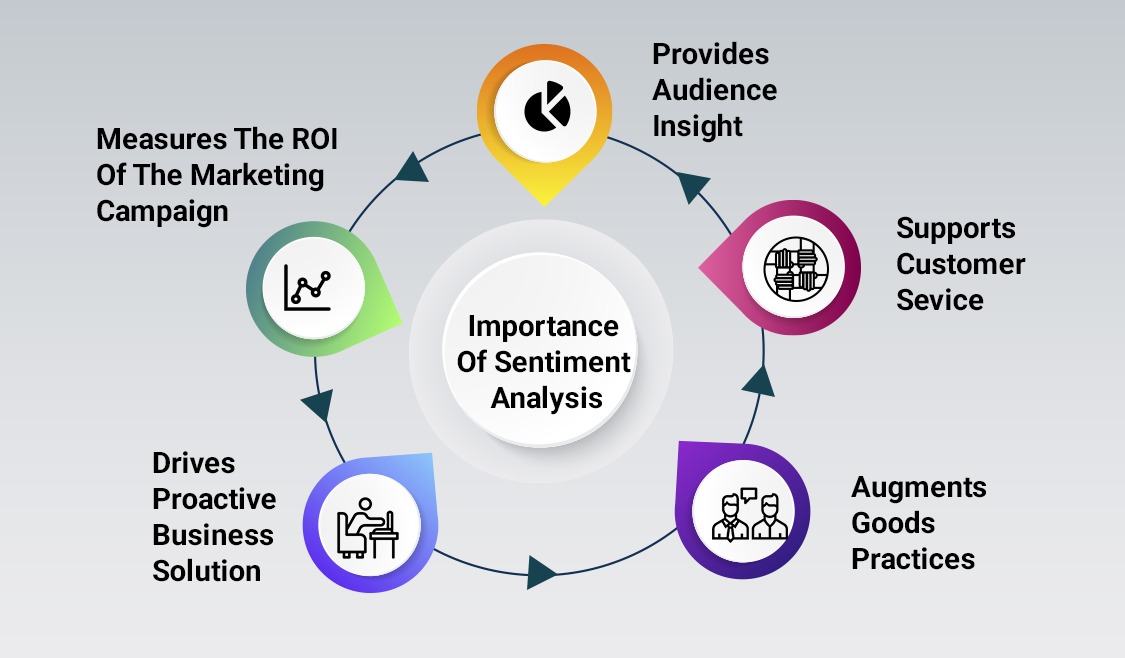
Every good conversation starts with good listening.Each time a customer mentions your brand name, you should be listening. The fine art of listening has been elevated to new levels by a disruptive technology – NLP sentiment analysis. It offers you the luxury of having an army of virtual observers listening on your behalf to what your customers are saying—everywhere.
We humans are able to understand the complex meanings lying beneath the surface of the spoken or written word. We can tell that a statement like, “My car broke down. Today of all days!” is emoting irritation. NLP without sentiment analysis would consider this a call for help. But when AI is added to NLP, it gets the added power of understanding the context of what is being said, almost like a human.
Can AI determine emotional tone? Yes. That’s why sentiment analysis is also known as opinion mining or emotion AI.
Why Sentiment Analysis is important
NLP and machine learning techniques in sentiment analysis is basically technology that processes natural language (natural language processing) using artificial intelligence algorithms to recognize patterns and read between the lines.
The reason more and more companies are including it into their business strategy is because it is like having an omniscient being updating you on what your customers or potential customers are talking about in relation to your product or market. It can go a step further by telling you why they are saying it. This can help you improve your products, services or even find inspiration for new products that have a market out there.
There are many tools available for text and sentiment analysis. The challenge is to customize them for your specific business needs. Our team at iTech stays up to date with the latest NLP models and trains them on specific datasets according to the customer requirements.

Also read: How Businesses Use Machine Learning to Improve Processes
Leveraging sentiment analysis using NLP to grow your business (h2)
Today artificial intelligence algorithms gift you the ability to harness the power of opinions made public on social media. Here are the different ways organizations are using NLP with sentiment analysis
1. Trawling through social media for brand mentions
You need to track the web or social media for online conversations about your company or product, whether it is a rave review or a negative tweet. When a customer mentions your company or brand name, it is an opportunity to understand their sentiment towards your brand and your products. The magnitude of the exercise which involves sieving through billions of posts on multiple channels can be overwhelming – Sentiment Analysis makes it possible with a high accuracy level.
Take the case of KFC which was left behind by its competitors when healthy food and nutrition values took over the food industry. Instead of tagging along, KFC chose to strike out on its own using memes and pop culture iconography as its USP. This led to consumers engaging with the brand and their products. KFC was thus able to carve a niche for itself and grow its market share.
Twitter Sentiment Analysis – The Facts
- 330 million monthly active Twitter users and 192 million daily users of which 55 Million are in the U.S.
- 500 million tweets sent each day – 6,000 tweets every second.
- 80% of Twitter users have tweeted with a brand mention.
- 54% of users surveyed by Twitter reported that they had searched for the brand after seeing a brand mentioned in tweets
- Customer service conversations have more than doubled on Twitter over the last two years
2. Testing the waters for product launches
If you are a company launching a new product or launching a product in a new market, you can benefit from text sentiment analysis to figure out how your product is perceived, soon after the launch. This will help you get rid of any teething problems with the product before proceeding any further and save you a considerable amount of time and money.
When the screeching violin of an Expedia Canada commercial featuring a man looking at snow, scarves and parkas got bad reactions on social media, the company turned the tide with a campaign that featured the violin being smashed, which was well received – Sentiment analysis showed the change.
Also Read: 5 Ways Automation Is Improving Customer Experience
3. Being one step ahead of your business rivals
Watch out for your direct competitors and see how your products or marketing campaigns measure up against theirs.
Titans like Apple Inc. use sentiment analysis to zero in on common complaints about the products and technology of its rivals and then build an advertising campaign emphasizing how the iPhone does not suffer from such complaints. For instance, if there is considerable negative sentiment on the design of a new Samsung phone, Apple responds with a marketing blitz that focuses on iPhone’s streamlined layout.
4. Mastering the art of listening
Listening is the most potent form of cognisance and it’s your way of saying to your customer “I hear you and your views are important to me”. You need to both hear the words and identify the feelings associated with the words.
25% of customers are likely to avoid a product or brand after a bad customer service experience. Their bad experience put out there in social media can cause a lot of negative publicity for you. Using NLP sentiment analysis, you can equip your customer service team to be prepared to deal with negative criticism of your product or brand.
77% of Twitter users are likely to be more positive about a brand when they get a response to their tweet. By mining sentiments about your product, your team can even hone their marketing strategy to drive sales and improve your bottom line. So, mining opinions provide actionable insights for your business.
5. Satisfied customers are loyal customers
If you identify satisfied customers through NLP sentiment analysis, you have a ready market for your sales team to transform single product buyers to multi-product buyers. Such customers are more likely to be amenable to cross selling. Conversely, your marketing team is forewarned not to approach dissatisfied customers who are likely to be irritated by sales pitches.
6. Tailoring products for the end user
An apt example of how sentiment analysis helps in product improvement would be how Google’s Chrome development team constantly monitors user feedback to pick out positive or negative sentiment and mention of features of the product such as security or scalability or even recommendations about the product. So they get a deeper perspective on the product which definitely helps in R & D.
Interested in learning more about implementing sentiment analysis for your business? Contact us today to get started.

